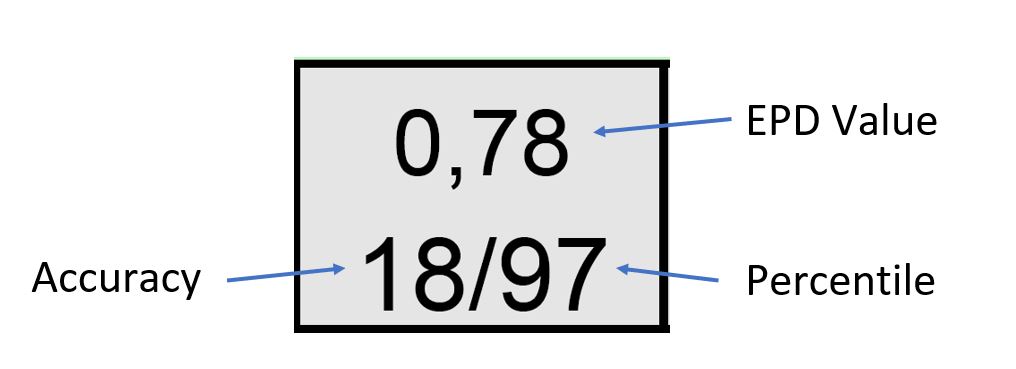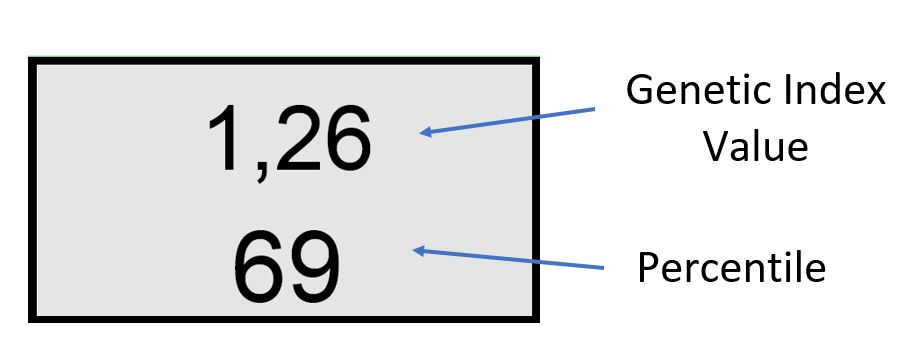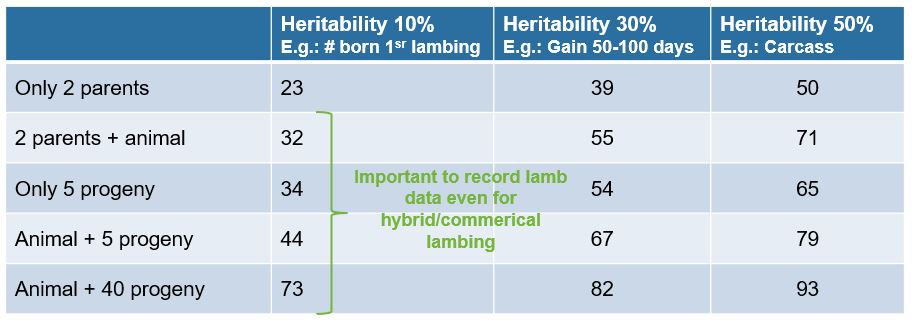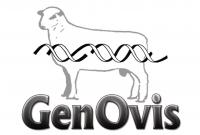INTRODUCTION
To understand GenOvis reports, you need to distinguish the basic notions. GenOvis estimates 15 EPDs (evaluated traits) and calculates 6 genetic indexes to help in selection. EPDs and genetic indexes are related to a percentile to rank animals within the breed. An accuracy is also available for EPDs to indicate its reliability.

WHAT IS A GENETIC INDEX?
Genetic indexes are used to select for several traits at once. Each index is formulated to provide an average rate of progress that has been set for each trait. As great as it would be to increase a trait such as number born up to 5 lambs per lambing, what would be the point if only 1 of those lambs survives? By balancing traits into indexes, it is possible to select for a number of important traits with one number: the genetic index. Six genetic indexes are available and each of them has its own purpose and combines different EPDs.

Genetic index = combination of EPDs
The best tool to use for selection
- EPDs (traits) are balanced within the index to get improvement on several traits using a unique value (Genetic Index)
- There is no unit
- Each genetic index has its own purpose
- Doesn’t include all the EPDs
- Doesn’t have accuracy
WHAT IS AN ACCURACY?
Accuracy is an indication of how much information was available to evaluate the trait for an animal. As the accuracy improves the EPD value becomes more stable. A value with an accuracy of 90% is not expected to change very much even as new information is added to the evaluation. But an EPD with an accuracy of 30% can change considerably.
- Accuracy ranges from 0% to 100%.
- An accuracy of 0% means there is no information (performance records) used to estimate the breeding values.
- An accuracy of 100% means the breeding values will not change even if more information is added.
Information on relatives and number of progeny affect EPD accuracy

Accuracy improves when new information is recorded. It is important to record as much information as you can, mainly for maternal traits whose required much more data to become reliable.
The data recorded by other sheep producers who bought animals in your flock are included in EPDs calculation and accuracy. Commercial producer data are very useful for purebred breeders as they contribute to increase breeding value accuracy of purebred stock.
